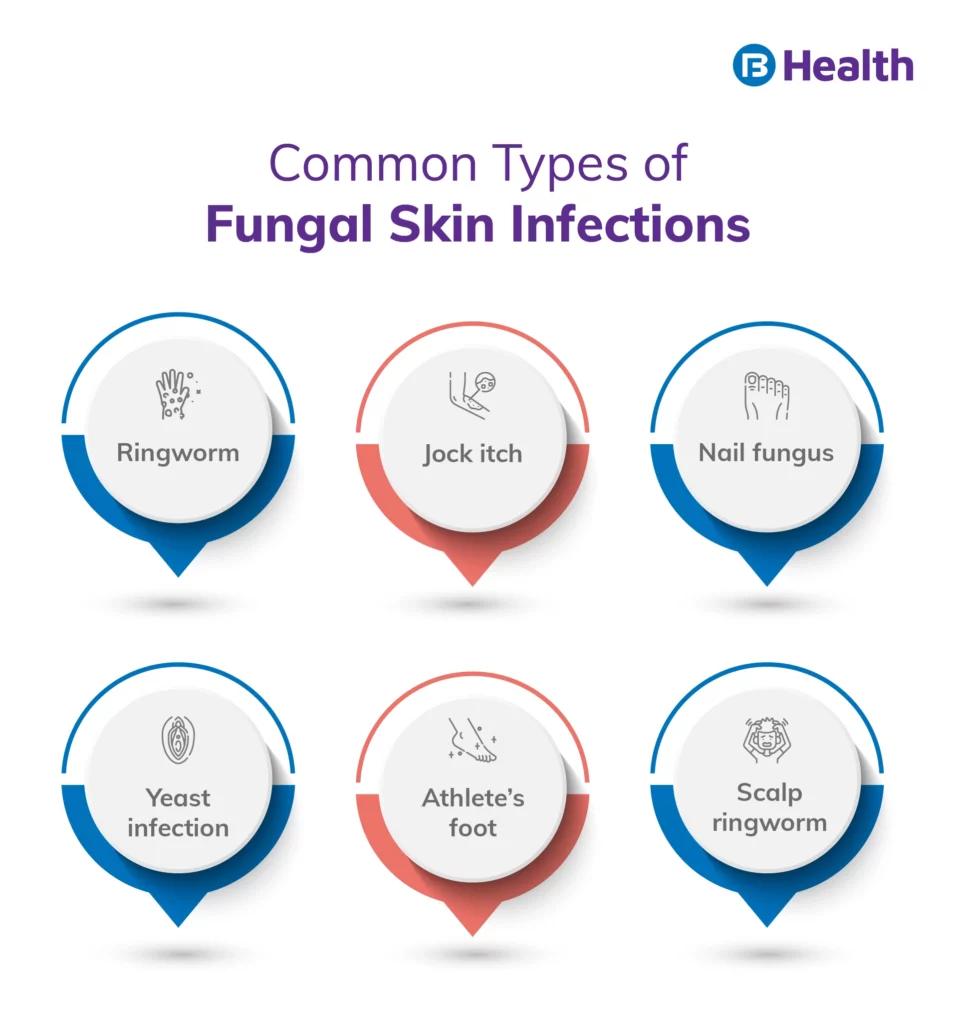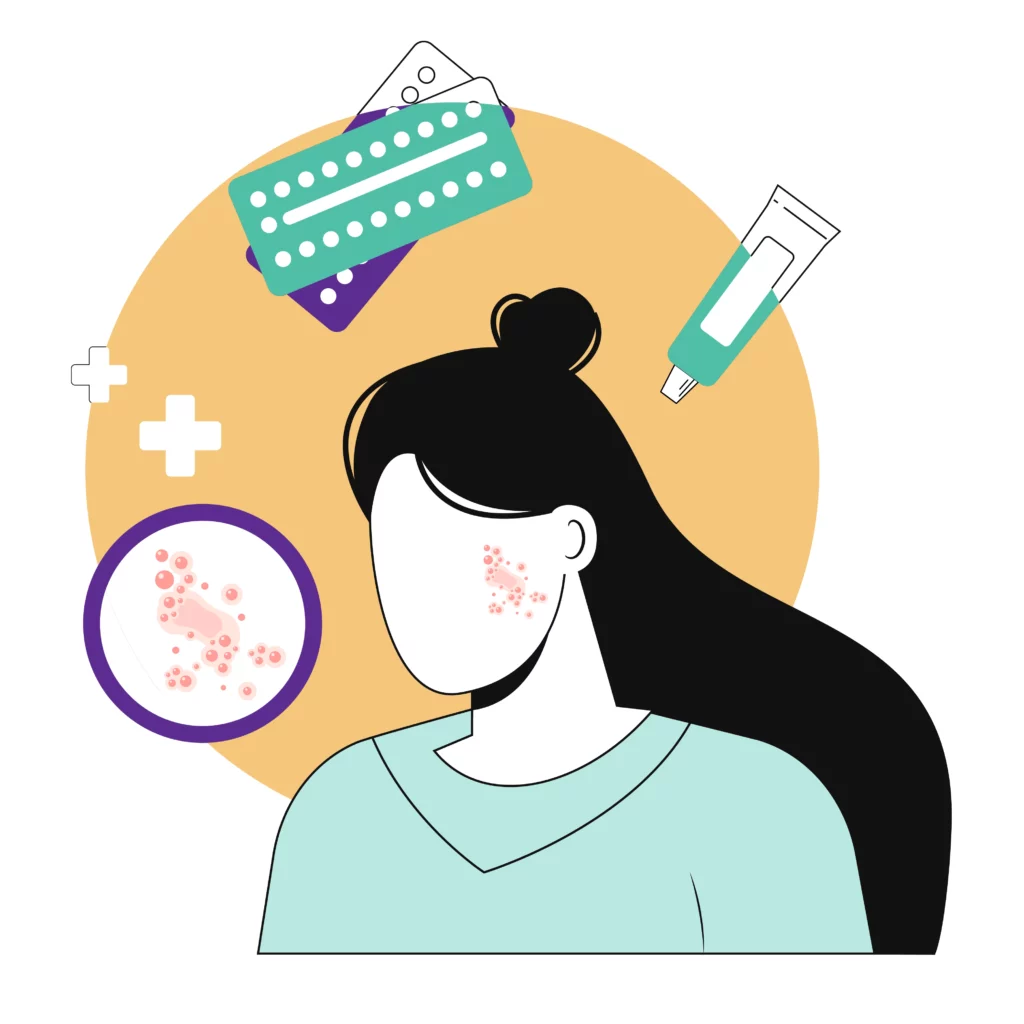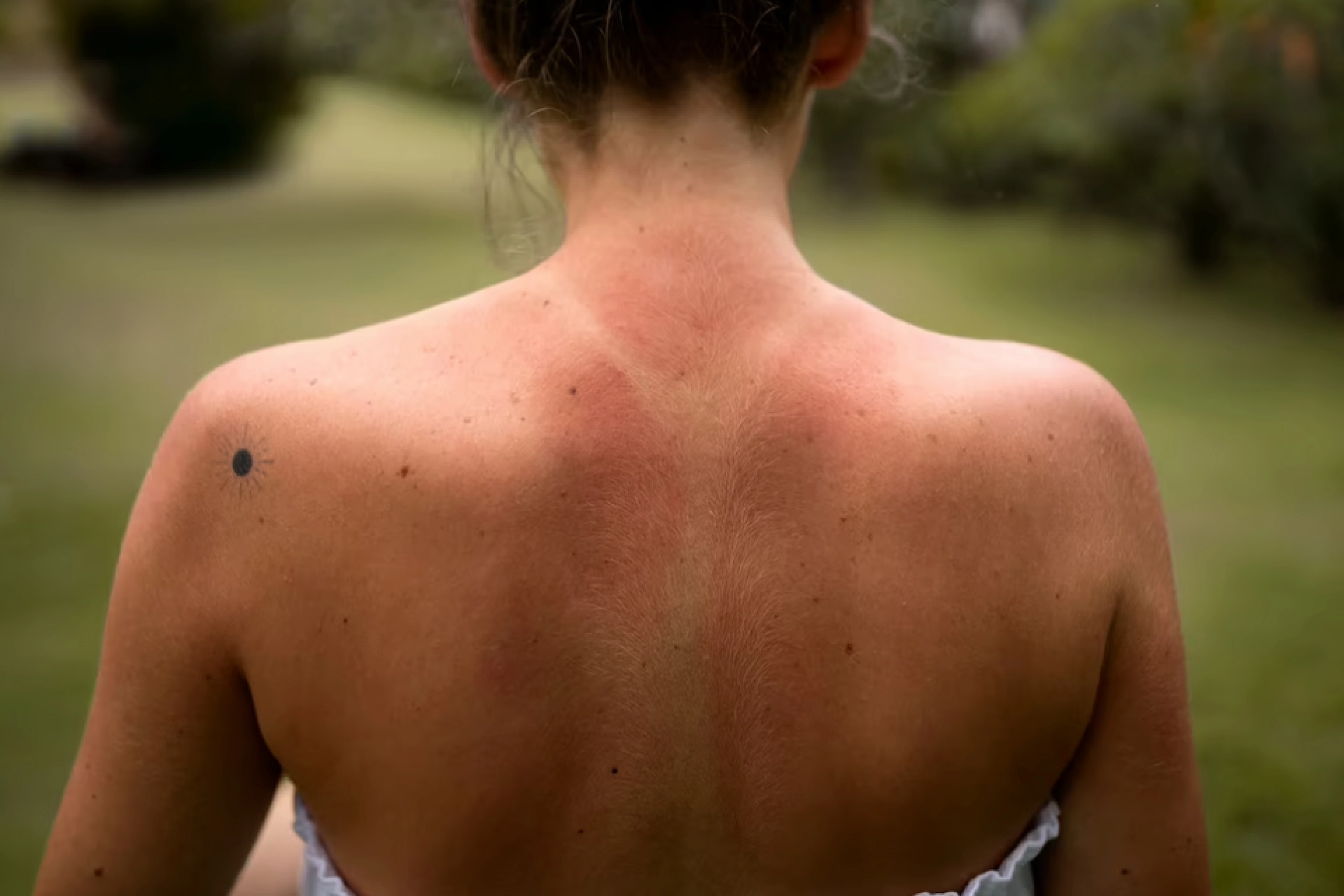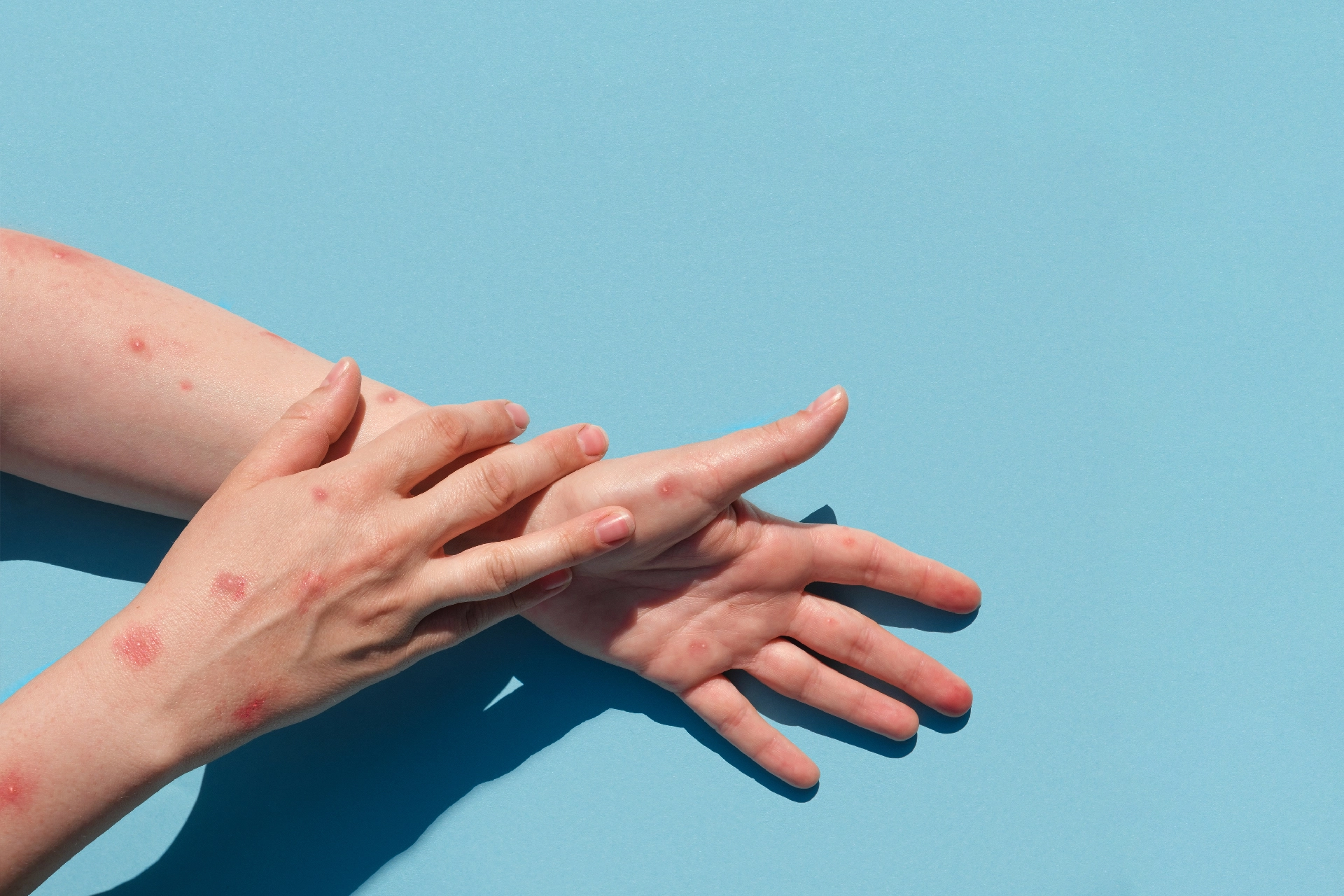Physical Medicine and Rehabilitation | 5 min read
Fungal Skin Infections: Causes, Early Signs, Types and Treatment
Medically reviewed by
Table of Content
Synopsis
There are different types of fungal skin infections affecting different parts of your body. However, there are some common links when it comes to their symptoms and treatment options available.
Key Takeaways
- Major causes of fungal skin infections include direct and indirect contact
- You may also get fungal skin infections from gyms and saunas
- Common fungal skin infections are athlete’s foot, jock itch and yeast infection
What are Fungal Skin Infections?
Fungi are everywhere around us. They live inside the earth, on its surface, in the air, on plants, and even inside human bodies. The mere presence of fungi in your system doesn’t mean you have fungal skin infections. However, if they reproduce at an abnormally fast pace or go deep inside the skin through a lesion or a cut, it can be one of the fungal skin infections causes.
As fungi usually grow in warm and damp places, fungal skin infections are also frequent in sweaty or moist regions of your body that don’t often come in close contact with air. Examples of such body parts are the folds of the skin, groin, and feet. Fungal skin infections usually get visible through scaly or discolored rashes. They may lead to mild to severe itches on your skin.
Read on to learn more about fungal skin infections, including their causes, types, symptoms, and treatments.
What causes Fungal Skin Infections
Here are the usual sources from which you may get fungal skin rash:
- Direct contact with a person or an animal affected by the condition
- Secondary contact from items such as clothing
- Group activities such as gym
- Steam rooms and saunas
- Hot tubs
The common fungal skin infections may or may not cause discomfort. However, they are less likely to be severe unless you have low immunity.
Additional Read: Treatment of Keratosis Pilaris

Types
Once you know the common causes of fungal rash, it is prudent to know their types. The following types of fungal skin infections are usually found around us:
Athlete’s foot
Also known as tinea pedis, an athlete’s foot causes skin changes in your feet. The condition is common among sportspersons and athletes, and it can be caused by friction with sports equipment, socks, and shoes. One may also get this condition from sharing public bathrooms or locker rooms. It can lead to the peeling of the skin between your toes.
Jock itch
Jock itch, known by its scientific name, tinea cruris, is a crucial fungal skin rash. The fungi responsible for this condition also have an affection for warm and moist places, and they also grow in similar areas of the body, such as the inner thighs, buttocks, and groin. This condition can spread through direct contact with an infected individual or a contaminated object.
Yeast infection
Yeast infections in the vagina are one of the most common types of Candida overgrowth in women. This causes a disruption in the normal balance of yeast and bacteria in the vagina. In such cases, fungal skin infections’ causes include a poor diet, hormonal imbalance, stress, and antibiotics.
Candida infections may also lead to diaper rash and fungal toenail infections.
Ringworm
Ringworm is the common name for tinea corporis. Note that the name ringworm comes from the ringworm-shaped rashes it develops on your skin; there is no actual ringworm involved. Instead, the condition is caused by a fungus that thrives on dead tissues, such as the ones on your nails, hair and skin. The same fungus is responsible for the athlete’s foot and jock itch.Children may get a different type of ringworm called scalp ringworm or tinea capitis. It leads to temporary hair loss, and the hair grows back if the treatment is initiated on time. It is the most common fungal skin infection in children [1].
Nail fungus
Also known as onychomycosis, nail fungus is one of the skin infections that may impact your toenails. As a result, they may become yellow, thick and fragile. This is a quite common skin problem in feet.
Additional Read: What Causes Tinea Versicolor
Early Symptoms
Fungal skin infection symptoms can be easily identified from the itching and burning sensations and skin changes such as peeling or cracking. However, specific symptoms may develop in the case of different fungal skin rash. Here’s a look at them:
- Symptoms of athlete’s foot
- Skin changes in your feet
- Growth of blisters on feet or discoloration of the affected area
- Fragile skin
- Burning, stinging, and itching sensations
- Usual signs of jock itch
- A rash may develop in your groin area, thighs or buttocks. The colour of the rash may be brown or grey
- Burning, itching, and irritating sensation in the affected area
- Skin becoming cracked, flaked or peeled dry in the infected area
- Yeast infection in the vagina may cause the following symptoms:
- Severe discomfort and itching inside and around the vagina and vulva
- A burning sensation during urination or sexual intercourse
- Unusual watery discharge from the vagina
- Inflammation of the vulva
- Development of vaginal rash
- Ringworm may lead to the following symptoms:
- Ring-shaped rash which itches
- Conditions such as athlete’s foot and jock itch
- Nail fungus or onychomycosis may cause the following:
- It makes your fingernails and toenails yellow, thick and fragile
- They may also develop white patches
Additional Read: Staph Infection Treatment

Diagnosis
Doctors may identify a fungal skin infection just by the following methods:
- Conducting a physical examination
- Learning about your symptoms by asking relevant questions
- Examining the scrapings of the scale under a microscope
- Ordering a fungal culture test
- Advising a blood test if the infection is chronic
Treatment
Here are the choices you have for fungal skin infections treatment:
- Oral medications, in case of chronic infections
- Medications prescribed by doctors for a quick relief
- Antifungal creams, which are usually available over-the-counter
However, note that treatments for different types of fungal skin infections vary and depend on an individual's medical history. If the symptoms are complicated, treatment too will include a complex and comprehensive approach.
With this knowledge about fungal skin infections, it may become easier for you to suspect a fungal infection. In such situations, don't hesitate to get a doctor's consultation. Now you can book an instant consultation with a dermatologist on Bajaj Finserv Health. It's time to prioritize your skin's health for a better and healthier life if you haven't done it already!
References
- https://renaissance.stonybrookmedicine.edu/sites/default/files/PIR-1-2017-fungal-skin-infections.pdf
Disclaimer
Please note that this article is solely meant for informational purposes and Bajaj Finserv Health Limited (“BFHL”) does not shoulder any responsibility of the views/advice/information expressed/given by the writer/reviewer/originator. This article should not be considered as a substitute for any medical advice, diagnosis or treatment. Always consult with your trusted physician/qualified healthcare professional to evaluate your medical condition. The above article has been reviewed by a qualified doctor and BFHL is not responsible for any damages for any information or services provided by any third party.





